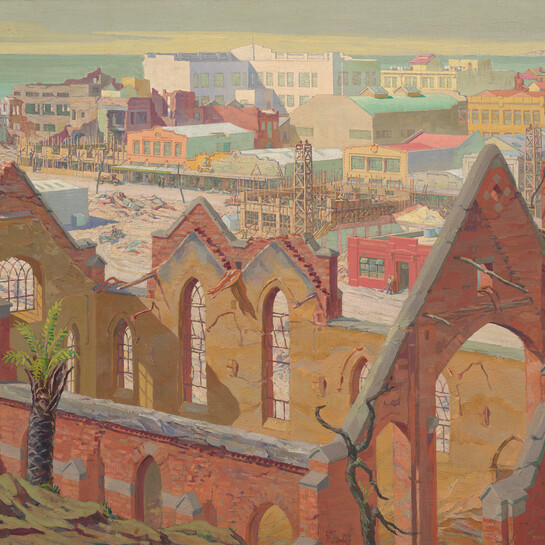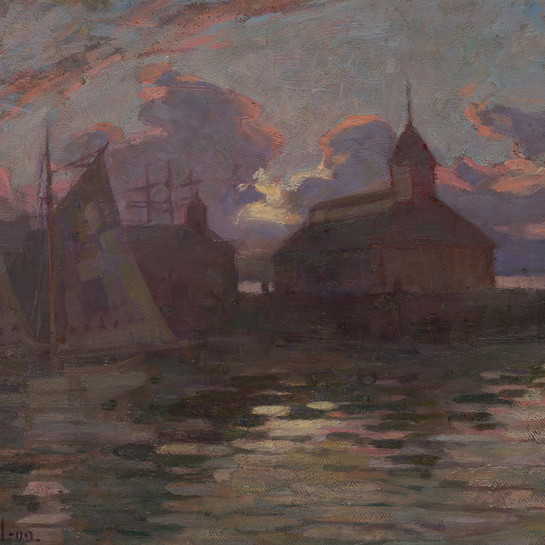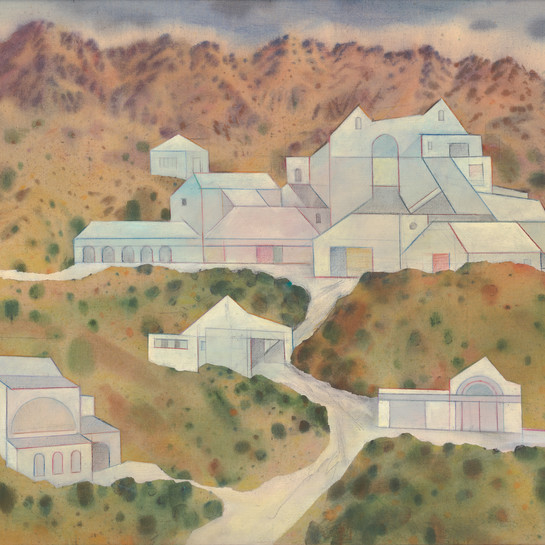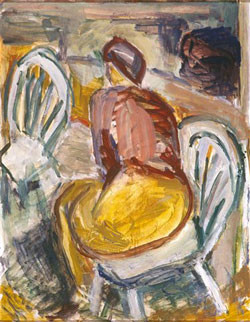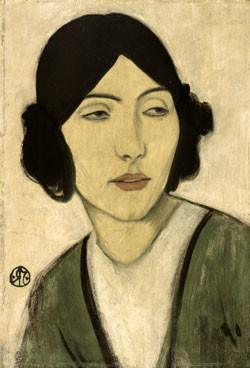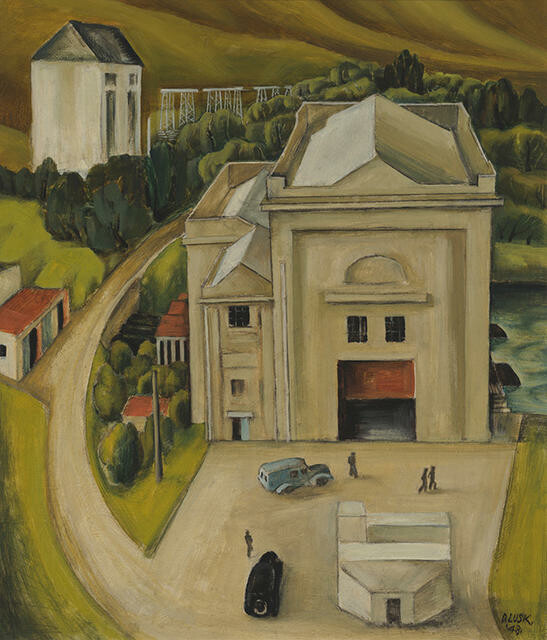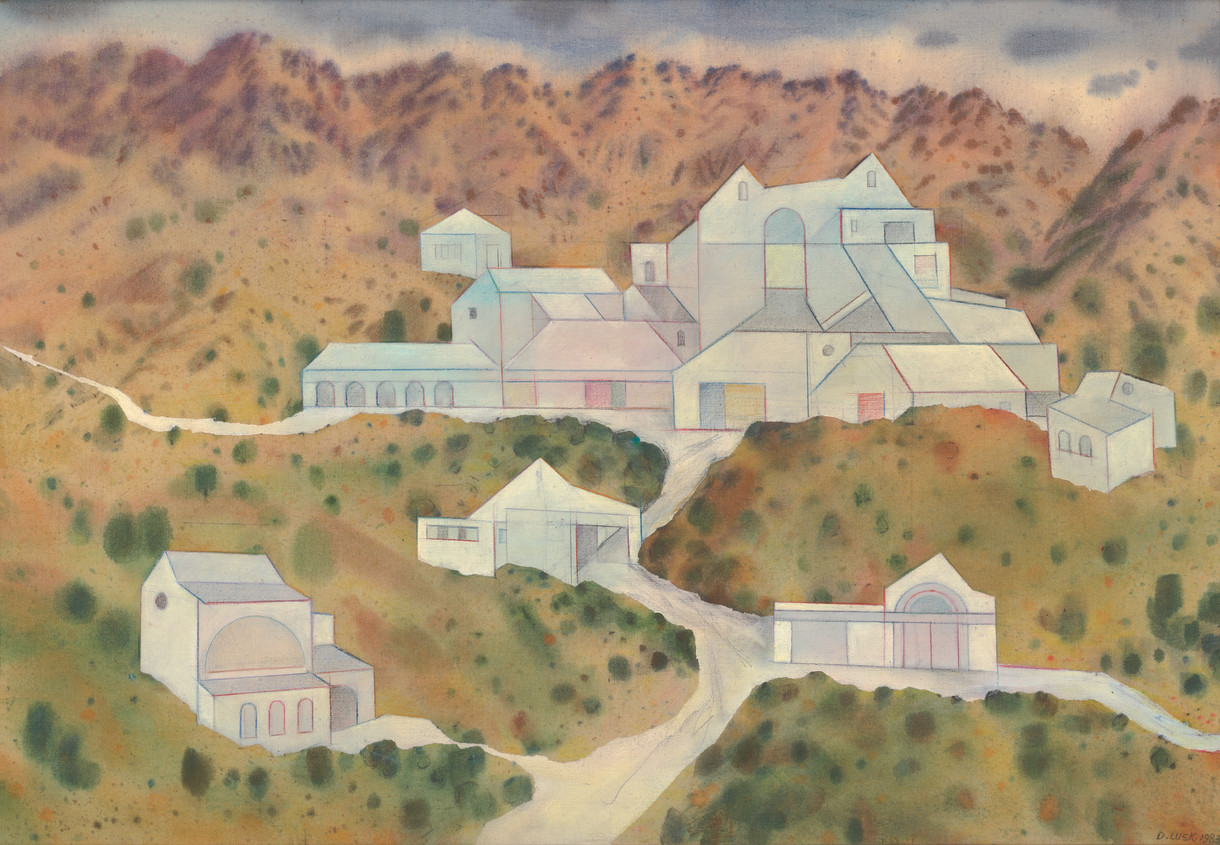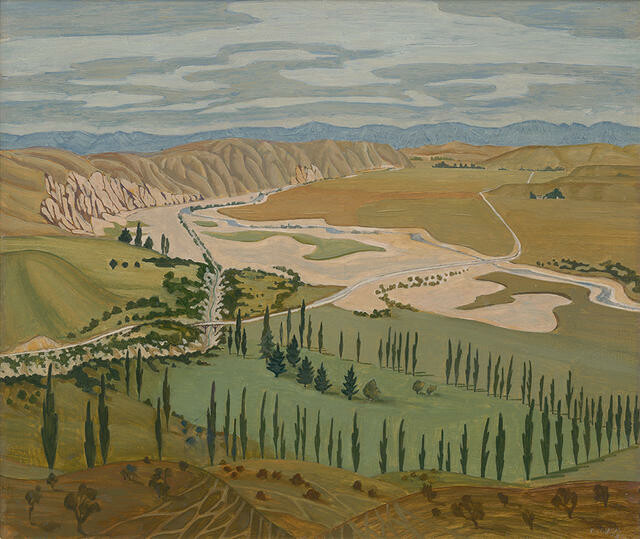Doris Lusk
Aotearoa New Zealand, b.1916, d.1990
Power House, Tuai
- 1948
- oil on board
- Donated from the Canterbury Public Library Collection, 2001
- 531 x 457mm
- 95/65
- View on google maps
Location: Burdon Family Gallery
Tags: automobiles, buildings (structures), landscapes (representations), people (agents), urban landscapes
Lusk described the power station at Tuai to art historian Lisa Beaven as a “gothic building in the middle of the wild hills”. Certainly, this striking oil painting plays up its strange incongruity, combining an abruptly elevated viewpoint with a heightened, stylised approach reminiscent of the unsettling streetscapes of Italian metaphysical painter Giorgio de Chirico (1888–1978). The tiny human figures moving briskly across the wide driveway accentuate the immense building towering over them, while the angled cars, curved road and power lines marching into the distance suggest a confluence of dynamic forces, barely contained.
(Doris Lusk: Practical Visionary, 4 June – 30 October 2016)
Exhibition History
Brought to light, November 2009- 22 February 2011
Doris Lusk emerged as a major figure in New Zealand landscape painting during the 1940s. Her work often bears similarities with the Canterbury regionalists in that she favoured painting wide open and unpopulated landscapes. In the paintings ‘Canterbury Plains from Cashmere Hills’ and ‘Towards Omakau, Central Otago’ the high viewpoint taken emphasises the structure of the landscape, a primary concern of Lusk’s. She simplifies the shapes of the hills, the patterns of eroded gullies on hillsides and the rhythmic shapes of trees in the foregrounds of both paintings. She was also compelled by the presence of built structures in the landscape. The formidable powerhouse in ‘Powerhouse, Tuai’ dominates the scene with the people in the foreground dwarfed by the presence of this monumental industrial structure, a feeling further intensified by the lack of a visible horizon.
